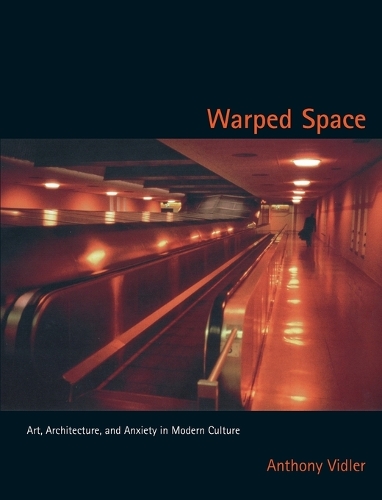
Warped Space: Art, Architecture, and Anxiety in Modern Culture
(Paperback)
Publishing Details
Warped Space: Art, Architecture, and Anxiety in Modern Culture
By (Author) Anthony Vidler
MIT Press Ltd
MIT Press
22nd February 2002
United States
Classifications
Tertiary Education
Non Fiction
Theory of art
701.8
Winner of
Physical Properties
Paperback
316
Width 175mm, Height 229mm
612g
Description
Beginning with agoraphobia and claustrophobia in the late 19th century, followed by shell shock and panic fear after World War I, phobias and anxiety came to be seen as the mental condition of modern life. They became incorporated into the media and arts, in particular the spatial arts of architecture, urbanism and film. This "spatial warping" is now being reshaped by digitalization and virtual reality. Anthony Vidler is concered with two forms of warped space. The first, a psychological space, is the repository of neuroses and phobias. This space is not empty but full of disturbing forms, including those of architecture and the city. The second kind of warping is produced when artists break the boundaries of genre to depict space in new ways. Vidler traces the emergence of a psychological idea of space from Pascal and Freud to the identification of agoraphobia and claustrophobia in the 19th century to 20th century theories of spatial alienation and estrangement in the writings of Georg Simmel, Siegfried Kracauer and Walter Benjamin. Focusing on current conditions of displacment and placelessness, he examines ways in which contemporary artists and architects have produced new forms of spatial warping. The discussion ranges from theorists such as Jacques Lacan and Gilles Deleuze to artists such as Vito Acconci, Mike Kelley, Martha Rosler and Rachel Whiteread. Finally, Vidler looks at the architectural experiments of Frank Gehry, Coop Himmelblau, Daniel Libeskind, Greg Lynn, Morphosis, and Eric Owen Moss in the light of new digital techniques that, while relying on traditional perspective, have radically transformed the composition, production and experience - perhaps even the subject itself - of architecture.
Author Bio
Anthony Vidler is Dean and Professor of the Irwin S. Chanin School of Architecture at The Cooper Union, New York. He is the author of Warped Space- Art, Architecture, and Anxiety in Modern Culture (2000), and The Architectural Uncanny- Essays in the Modern Unhomely (1992), both published by The MIT Press, and other books.
